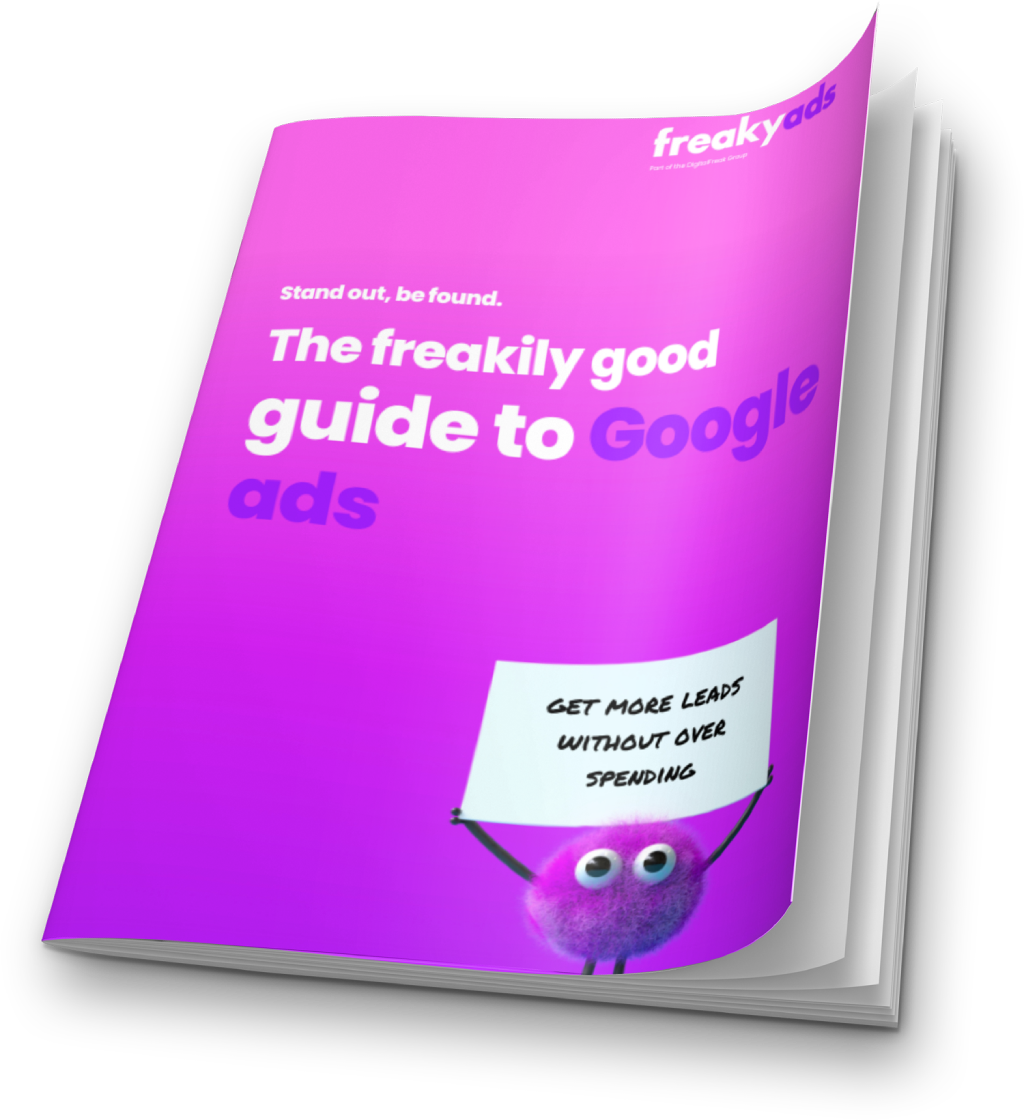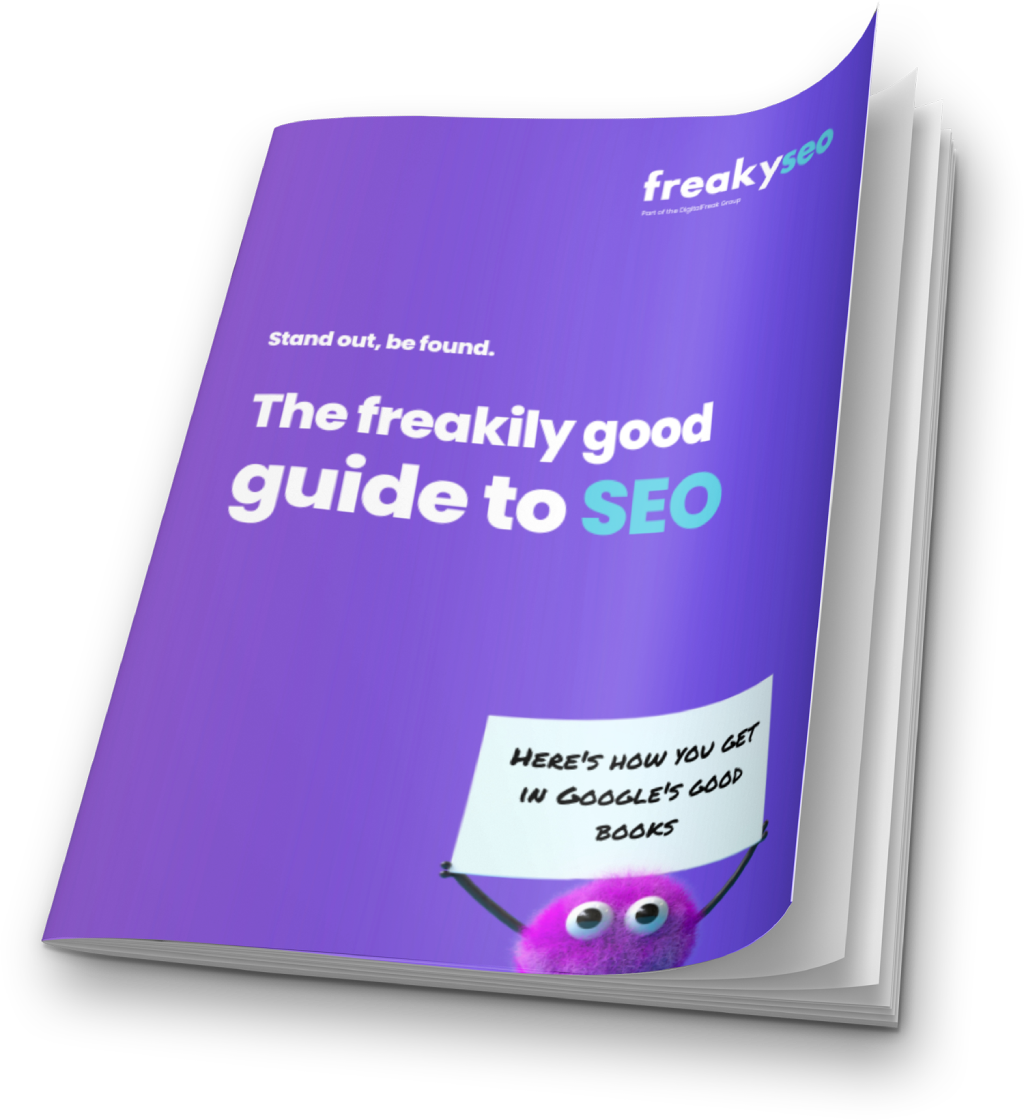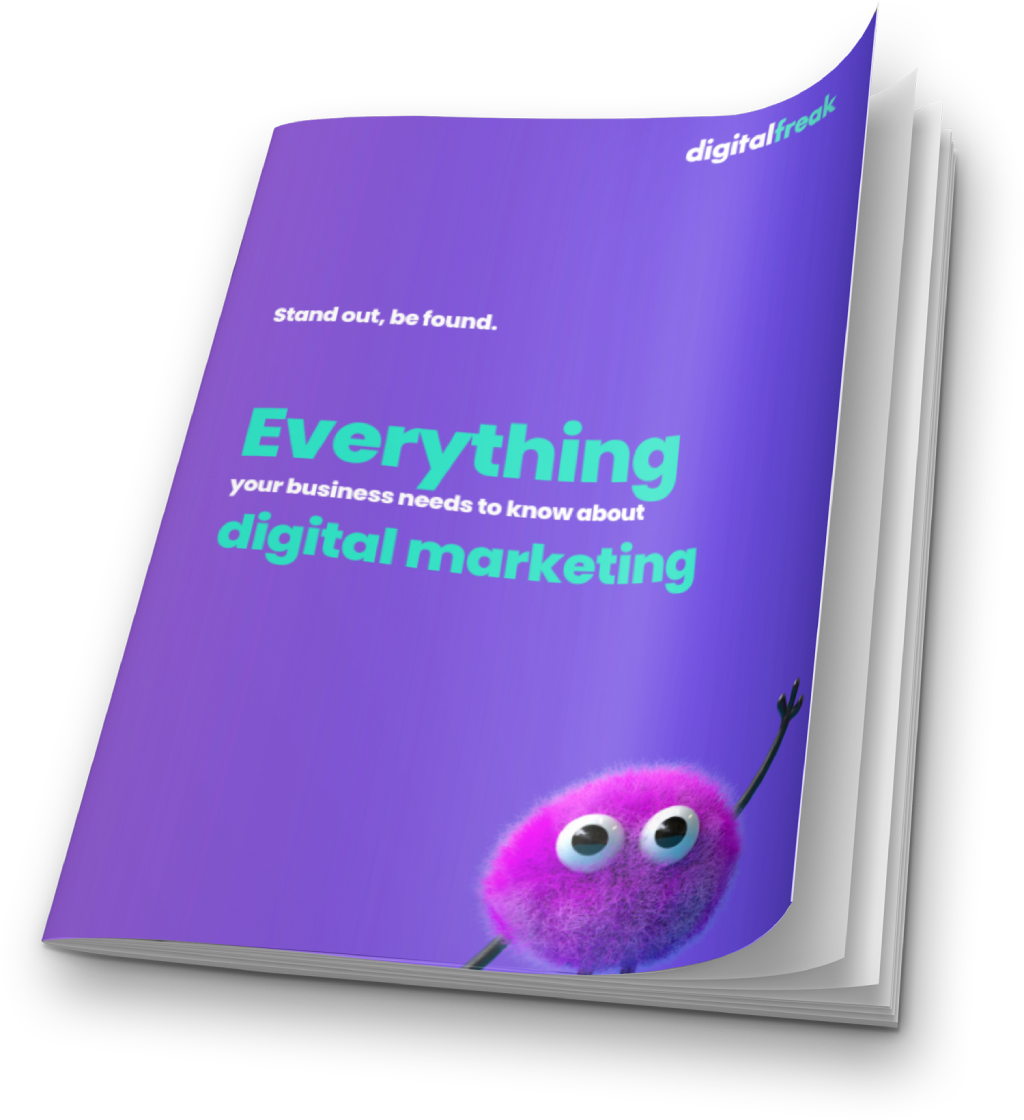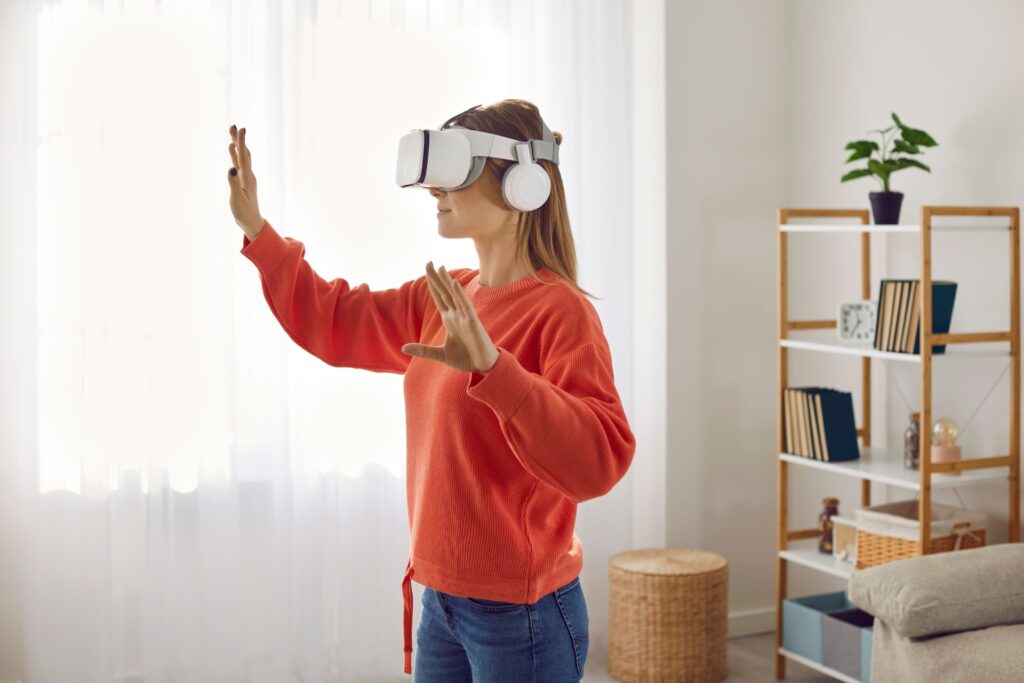Augmented Reality, also known as AR, is no longer reserved for cutting-edge tech companies or futuristic brand campaigns. It has officially gone mainstream. Today, even small businesses can tap into this technology to let customers try on sunglasses, test lipstick colours, place virtual furniture in their living room, or see how jewellery looks from every angle — all through their smartphone.
Platforms like Meta (Facebook and Instagram) and Snapchat are leading the charge, offering easy-to-use AR tools for advertisers. These immersive experiences don’t just look impressive. They perform exceptionally well, delivering longer engagement times, higher click-through rates, and better conversion results.
If you’re a business owner or marketer looking to enhance your online advertising, now is the perfect time to explore how AR social media ads can help your brand connect with customers in a more personal and interactive way.
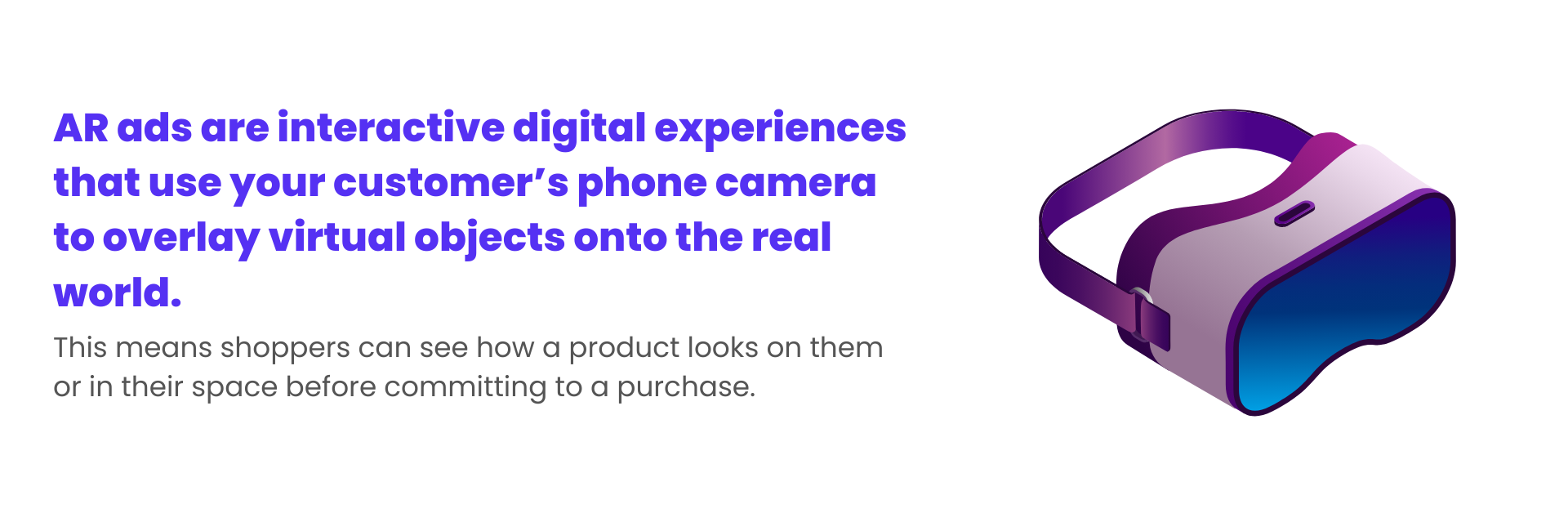
What Are AR Ads and How Do They Work?
AR ads are interactive digital experiences that use your customer’s phone camera to overlay virtual objects onto the real world. This means shoppers can see how a product looks on them or in their space before committing to a purchase.
Here are a few examples of how AR ads are used in practice:
- A customer can try on different sunglasses styles in real time by turning their head in front of the camera.
- A lipstick ad lets the user swipe through multiple shades and see how each one appears against their skin tone.
- Furniture brands let people place a virtual couch in their living room to visualise how it fits in with their existing décor.
- Jewellery brands allow shoppers to rotate their face and preview earrings or necklaces from different angles.
These AR experiences are built into the ad platforms customers already use, including Instagram Stories, Facebook Reels, and Snapchat Lenses. There is no need for third-party apps or complex technology.
Why AR Ads Are So Effective
AR advertising is growing quickly because it addresses one of the biggest challenges in ecommerce — uncertainty. Customers are often hesitant to buy online when they cannot see or touch the product. AR removes that hesitation by letting them interact with the item digitally.
Here’s why brands of all sizes are starting to prioritise AR ads in their marketing strategies.
1.Longer Engagement Times
AR content invites interaction. People actively explore your product by turning their heads, walking around with their phone, or tapping to change options. On average, users spend significantly more time with AR ads than with static or video formats. In fact, Meta has reported that AR ads can drive view times of up to 75 seconds — which is a long time in the world of social media.
2.Higher Click-Through Rates
When a person sees how your product looks on them or in their home, they are far more likely to take the next step. On Snapchat, brands using AR try-on ads have seen click-through rates double compared to standard video ads. The personalisation aspect makes a big difference. It transforms the experience from browsing to buying.
3.Reduced Product Returns
One of the leading causes of online returns is the mismatch between customer expectations and the reality of the product. With AR, customers get a much clearer idea of what they are purchasing. This leads to fewer surprises when the item arrives, which helps lower return rates and increases customer satisfaction.
4.Better Conversion Rates
All of the above factors — higher engagement, improved clarity, and stronger confidence — combine to create one powerful outcome. More people buy. Whether you sell lipstick, lighting, or lifestyle products, AR makes the experience feel more real and reassuring, which leads to more conversions.
AR Ads Are No Longer Just for Big Brands
In the past, AR advertising was expensive and complex. Brands had to develop custom apps or work with specialist developers to create interactive experiences. That is no longer the case.
Today, businesses of all sizes can create AR campaigns using tools provided by Meta, Snapchat, and even Pinterest. These platforms offer built-in functionality and templates that simplify the process. You don’t need a massive budget or a full production team to make it happen.
This opens the door for small and medium-sized businesses to run try-before-you-buy campaigns that feel innovative and deliver tangible results.

How Different Industries Use AR Ads
AR advertising is incredibly versatile. Here are a few examples of how various industries are using it to drive engagement and sales.
Fashion and Accessories
Letting shoppers try on sunglasses, hats, scarves, or jewellery through their phone camera makes the buying decision easier. Customers can experiment with different styles and see how they look in real time.
Beauty and Skincare
Beauty brands are embracing AR to allow users to test makeup shades virtually. Customers can swipe through lipstick colours, foundation tones, or eyeshadow palettes and see how they look before committing to a purchase.
Homewares and Furniture
Home and décor brands are using AR to show how furniture fits in a space. Customers can hold up their phone and place a coffee table or lamp in their room to see how it works with their layout and lighting.
Fitness and Lifestyle
Brands that sell gym equipment, yoga mats, or even fitness apparel can use AR to demonstrate the look, size, and function of their products. It is a great way to offer an immersive experience without needing physical stores.
Where to Launch AR Ads
Three major platforms currently make it easy to create and run AR ads.
Meta: Facebook and Instagram
Meta offers a tool called Spark AR, which lets brands create filters and effects for use in Instagram ads and Facebook ads, Reels, Stories, and even in-feed content. You can build a virtual try-on experience that links directly to your product page for instant checkout options.
Snapchat
Snapchat has led the way with AR experiences through its Lens Studio. It offers a wide range of try-on templates, spatial tools, and branded interactions. With a young, highly engaged audience, Snapchat is ideal for fashion, beauty, and lifestyle brands looking to make a splash.
Pinterest is experimenting with AR features as part of its focus on shopping. Users can already try on beauty products or see home décor items in their space. It is a growing platform for product discovery, and AR makes it even more interactive.
How to Get Started With AR Advertising
You don’t need to start from scratch or invest in complex software. Many businesses begin with a single AR product experience to test the waters and measure results. Here is a step-by-step overview.
1.Choose a Product to Feature
Start with a product that customers would naturally want to try before buying. Popular options include eyewear, beauty items, furniture, and accessories.
2.Select Your Platform
Think about where your audience spends their time. Meta and Instagram are great for broad demographic reach. Snapchat is ideal for younger audiences. Pinterest suits home and beauty product exploration.
3.Build Your AR Experience
You can use Spark AR or Lens Studio to build the creative, or work with an agency like Digital Freak. Our team helps brands create high-quality, mobile-friendly AR ads that look great and perform even better.
4.Launch, Test, and Optimise
Once your AR campaign is live, track how users interact with the experience. Measure key metrics like engagement time, clicks, and conversions. Test different creative versions and update your campaign regularly to improve results.
Why Small Businesses Should Embrace AR Ads Now
AR advertising offers something very few ad formats can match — immersion. It allows customers to picture themselves using your product, which builds trust and shortens the buying cycle. You do not need to compete with massive brands or blow your budget to use this technology effectively.
With tools now built into popular ad platforms, you have access to an engaging video format that was once limited to enterprise-level marketing teams. This levels the playing field and gives you a competitive edge in a crowded market.
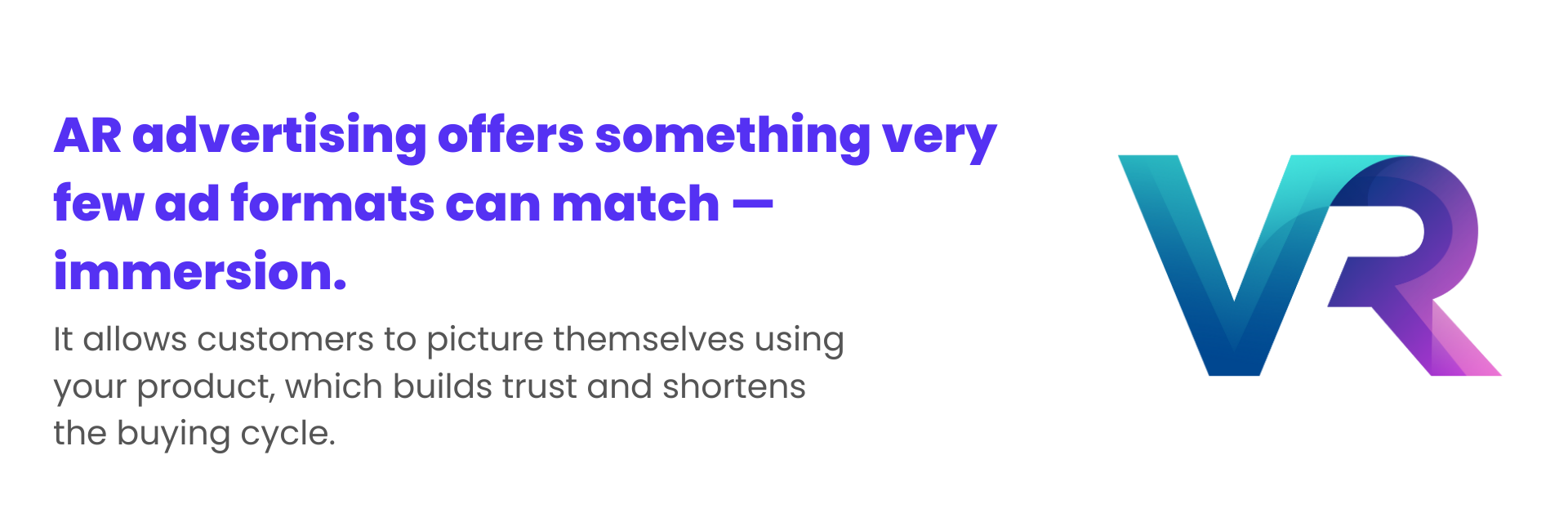
Work With Digital Freak to Launch Your AR Ad Campaign
At Digital Freak, we work with small and medium-sized businesses in Melbourne to create social media ad campaigns that drive real results. If you are ready to experiment with AR advertising, our team can help you develop engaging, cost-effective try-on experiences that increase conversions and improve customer engagement.
Whether it is a sunglasses try-on filter, a virtual lipstick demo, or furniture placement ads, we make AR advertising accessible, affordable, and effective.
Let your customers see it, try it, and love it — before they click Buy Now.
Book a free strategy call with Digital Freak and start building your first AR campaign today!
FAQs
What are AR ads and how do they work?
AR ads use a smartphone camera to overlay virtual products or effects onto the real world. This lets customers see items like sunglasses, lipstick, or furniture “on” them before buying. These interactive ads run on platforms like Meta and Snapchat. At Digital Freak, we help businesses in Melbourne create affordable, high-converting AR video ads that bring products to life.
What kind of products work best with AR ads?
AR ads work especially well for products customers want to see on themselves or in their space. This includes beauty items, eyewear, jewellery, hats, furniture, home décor, and more. If your product benefits from a “try before you buy” experience, AR is the perfect fit. Need help deciding? Get a free strategy call with our Melbourne digital agency.
Which platforms support AR advertising?
Currently, Meta (Facebook and Instagram), Snapchat, and Pinterest all offer AR advertising tools. Meta’s Spark AR and Snapchat’s Lens Studio allow brands to create engaging try-on or placement experiences that run within ads and stories. At Digital Freak, we help you choose the right platform for your audience and goals.
How much do AR ads cost to create and run?
Creating AR ads has become much more affordable than many businesses realise. Costs depend on the complexity of the creative and the platform used, but it’s often much cheaper than traditional video production. Combined with strong ROI, AR offers great value. Digital Freak offers flexible pricing for digital marketing services to suit your business and campaign objectives.
Do AR ads actually improve conversions?
Yes. AR ads have been shown to improve click-through rates, reduce bounce rates, and increase purchase intent. When customers can see a product on themselves or in their space, they feel more confident buying it. At Digital Freak in Melbourne, we’ve seen AR ad campaigns significantly outperform standard image or video ads in performance.
Do I need special tech or equipment to launch AR ads?
No. You don’t need any specialised equipment beyond your usual advertising tools. Meta and Snapchat offer built-in functionality, and Digital Freak can manage the design and setup process for you. We’ll make the tech and video marketing side simple so you can focus on growing your business – let’s chat!
Can I reuse existing content for AR ads?
Yes. You can often adapt product images, textures, or video clips to create AR effects. Our team can help transform your existing marketing assets into engaging AR ad experiences that are mobile-ready and platform-optimised. We make the most of what you already have to keep costs low and impact high. Contact us today!

Written by
Megha Jain - Social Media & Ads Specialist
Prolific digital marketer with a passion for designing & beating the former "best yet". I write stories, create marketing campaigns, perform SEO and manage social media inside out. Passionate about leveraging cutting-edge techniques, I thrive in the ever-evolving world of digital marketing. Let's connect and innovate together!



